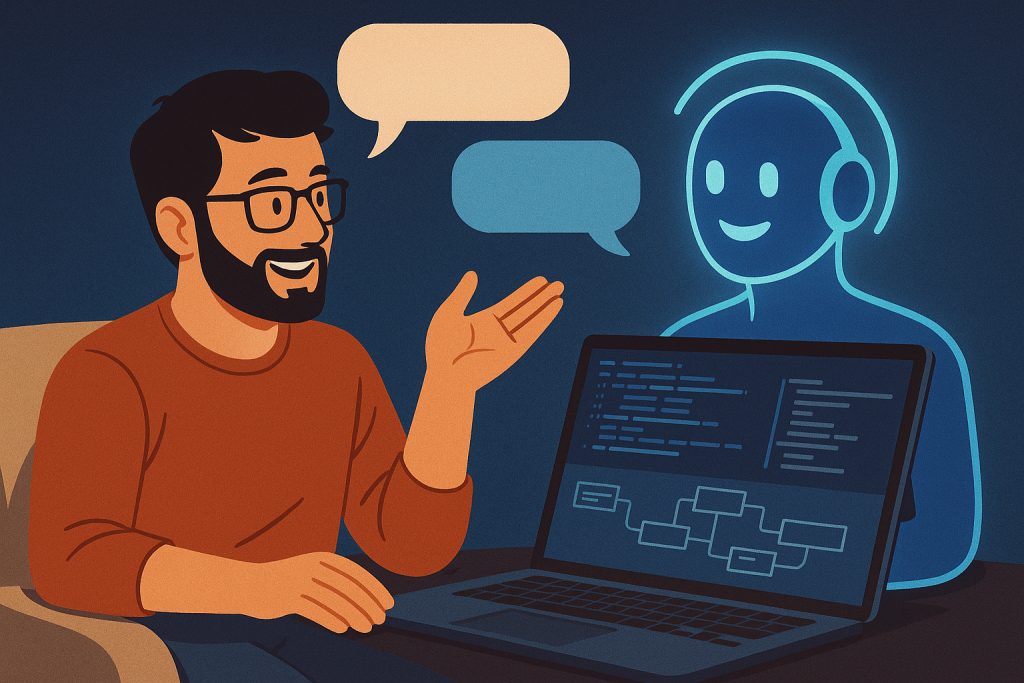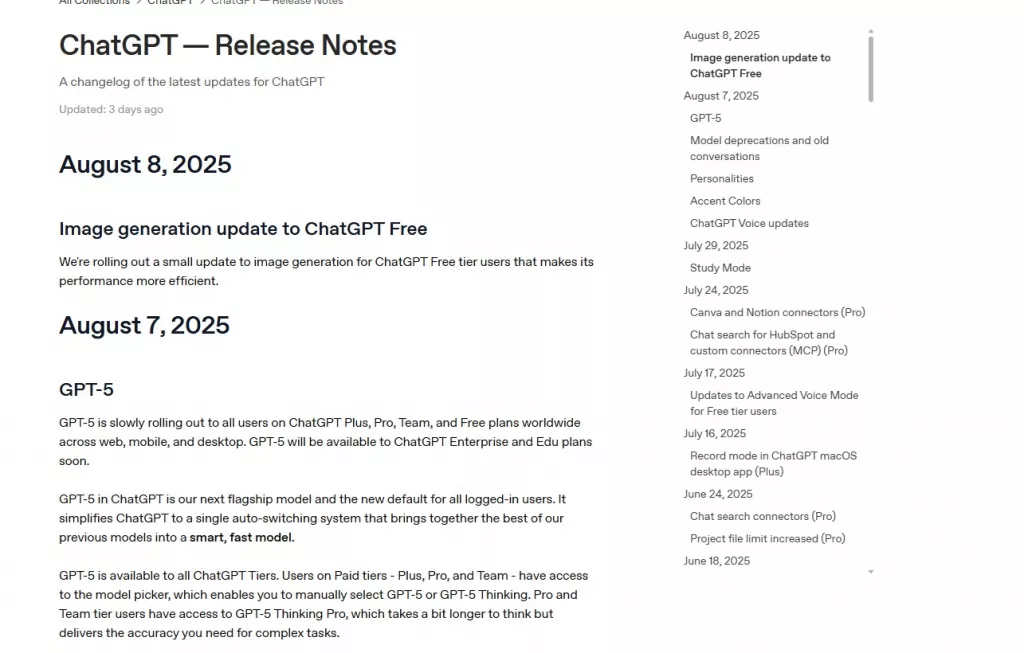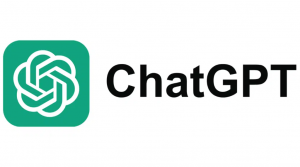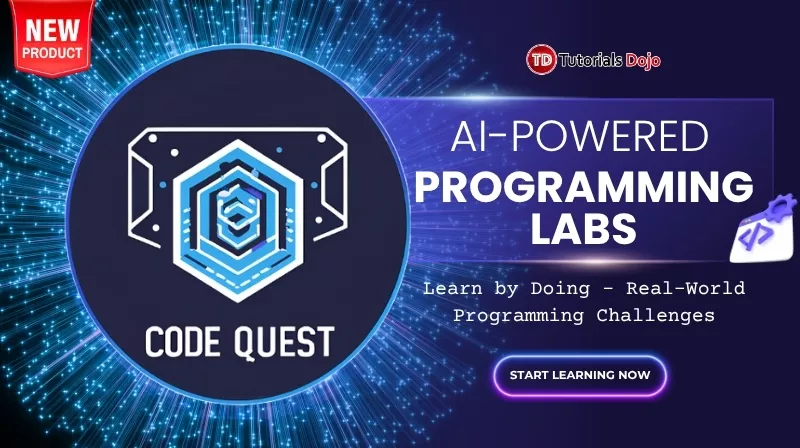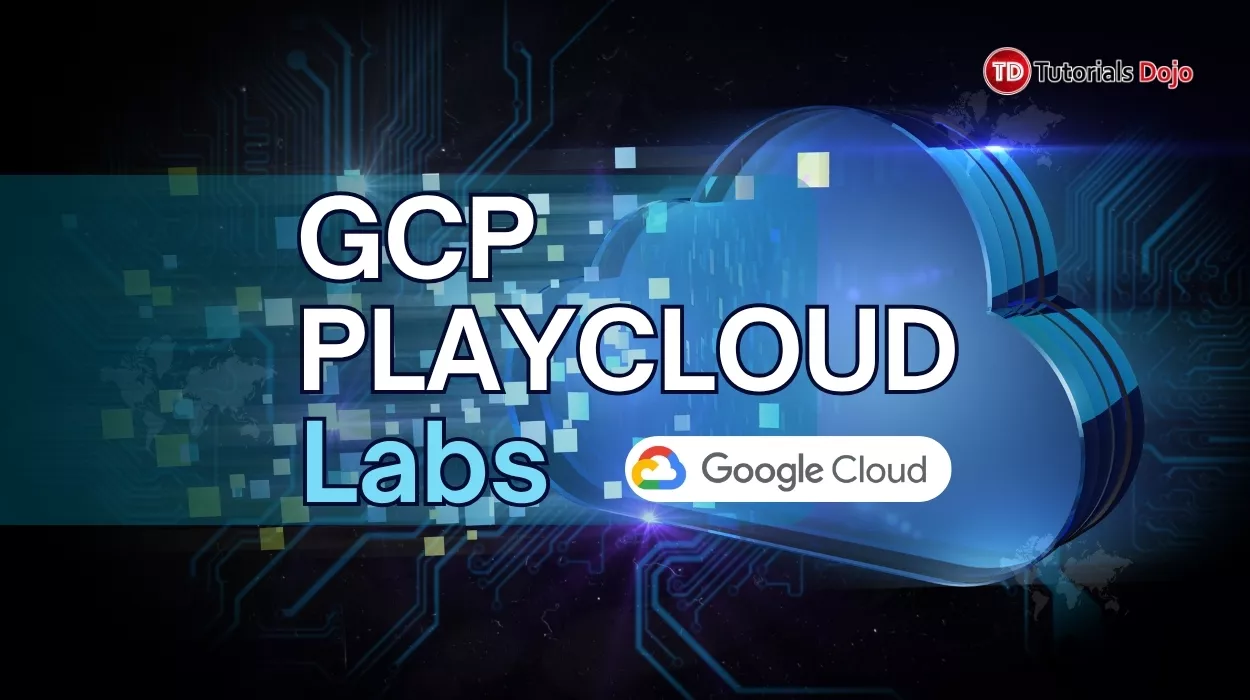Last updated on September 3, 2025
Coding no longer has to mean endless lines of text, late-night bug hunts, and constant fixes. A growing number of developers are turning to vibe coding, a style that feels more like a creative conversation than a technical grind. Instead of wrestling with syntax, developers describe what they want and let AI handle the heavy lifting. As a result, coding shifts from typing code to shaping ideas. This article covers what vibe coding is, where it came from, why it matters, and how it’s influencing the future of software development. The term vibe coding was popularized in early 2025 by Andrej Karpathy, former Director of AI at Tesla and a leading AI researcher. He used it to describe a conversational programming style where developers state their goals in plain language and AI tools generate, refine, and debug the code. This approach turns coding into a collaboration, with the developer guiding the vision while the AI handles repetitive and technical work. Over time, it has encouraged a more fluid relationship between human and machine, reshaping how coding is done. Vibe coding blends prompt engineering with iterative feedback. A developer states the desired functionality, and the AI generates the implementation. Afterward, the developer reviews, tweaks, or requests refinements. Consequently, the process becomes fast, intuitive, and prioritizes ideas over syntax. This makes it less about the act of coding itself and more about shaping solutions creatively. Key traits of vibe coding include: Conversational development where natural language replaces manual syntax Rapid iteration with short test-and-improve cycles Minimal overhead so focus stays on the goal Idea-first mindset where code becomes a byproduct of creativity At its core, vibe coding is a practical application of generative AI — the same technology that powers AI art, music, and text generation. Instead of producing images or stories, the AI generates functional code based on natural language prompts. Modern large language models can understand context, remember prior instructions, and produce code that often runs correctly on the first attempt. Because of this, generative AI shifts coding from a purely technical process into an interactive and creative conversation, enabling both experienced developers and complete beginners to build functional software. Effectiveness depends heavily on context. On one hand, for rapid prototypes and personal projects, vibe coding offers incredible speed and ease of use. On the other hand, for mission-critical, enterprise-grade software, it still requires human oversight to ensure quality, maintainability, and security. Because of this, it works best when balanced with thorough code reviews and testing. When used well: Prototypes can emerge in hours rather than weeks Non-coders can create usable tools with minimal training Developers can explore multiple design options quickly When used carelessly: Hidden security vulnerabilities can remain unchecked Code quality may decline without reviews Long-term maintenance can become challenging With the latest ChatGPT upgrade now released, vibe coding is expected to become even more widespread. The updated model offers faster response times, enhanced reasoning capabilities, and better integration with development tools. This means developers can hold richer, more context-aware conversations with the AI, producing cleaner code and more reliable solutions in fewer iterations. As a result, both professional developers and newcomers can use vibe coding more efficiently, making it a core part of everyday programming rather than just a niche trend. The rise of vibe coding wouldn’t be possible without powerful AI-assisted platforms. As the ecosystem grows, several tools stand out for their versatility and efficiency: ChatGPT — OpenAI’s large language model for generating, debugging, and explaining code in many languages. Commonly used for prototyping, reviews, and learning, it acts as a real-time partner in vibe coding by turning plain language prompts into working code, refining it, and providing quick explanations for faster iteration. Cursor — An AI-powered code editor built on Visual Studio Code that integrates natural language programming into the IDE. It boosts productivity by handling tasks like writing functions, refactoring, and testing through conversation. In vibe coding, it keeps AI generation within the coding environment, enabling seamless editing, running, and improving code without losing context. GitHub Copilot — GitHub’s AI assistant powered by OpenAI’s Codex. It delivers real-time suggestions, completes functions, and reduces repetitive work in editors like VS Code and JetBrains. For vibe coding, it’s best when partial code or patterns exist, offering in-line completions without full prompt sessions. Amazon Q Developer — AWS’s generative AI for coding, debugging, refactoring, and automating cloud workflows. It works in IDEs, the AWS Console, CLI, and tools like Slack. In vibe coding, it speeds up cloud-native development by generating serverless apps, infrastructure templates, and AWS integrations from natural language descriptions. Tip: If you’d like to learn how to use Amazon Q Developer directly within VS Code, feel free to check out my article: “Amazon Q Developer Agent: Code, Review, and Deploy Apps with AI Agents.” Because AI tools are becoming more accessible, vibe coding is reshaping software careers in multiple ways. For example, faster learning curves now allow beginners to build functioning apps before mastering syntax. Moreover, more product-focused roles shift developers toward designing features rather than coding them manually. At the same time, the rise of solo startups makes it possible for one person to launch a full product with AI assistance. Finally, blended skill sets now matter, combining creativity, communication, and problem definition with technical expertise. ✅ Pros Rapid prototyping for startups and innovators Low barrier to entry into software development Encourages creativity and experimentation Useful for learning new programming concepts ⚠️ Cons Code quality and security risks without reviews Over-reliance on AI may weaken core coding skills Limited suitability for large-scale, long-term projects Potential for undocumented, “black box” code Vibe coding excels when speed and creativity matter more than perfect architecture. Best uses include hackathons, proof-of-concept projects, internal tools and automation, educational projects, and personal or hobby apps. However, for production-grade, high-security, or heavily regulated software, vibe coding works best as a starting point, not the final development process. Vibe coding isn’t just a passing buzzword. It’s a vision of a future where human imagination drives the software creation process and the AI handles the heavy lifting. With the arrival of the new developed AI Tools, that future feels closer than ever, promising more intuitive, powerful, and accessible development for everyone. While it is not a complete replacement for traditional engineering, it enables more people to bring their ideas to life faster than ever. Like any powerful tool, its real value comes from balancing creativity with caution.
Origin of the Term
What is Vibe Coding?
The Role of Generative AI in Vibe Coding
Is Vibe Coding Effective?
The Impact of the New ChatGPT Release
Popular Vibe Coding Tools
How Vibe Coding is Changing Careers
Pros and Cons of Vibe Coding
What is Vibe Coding Ideal For?
Conclusion


